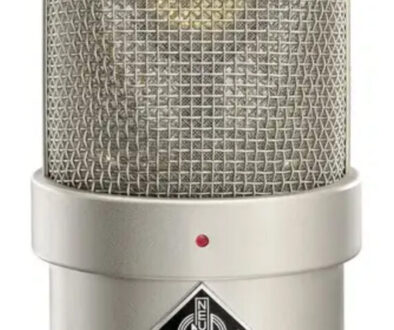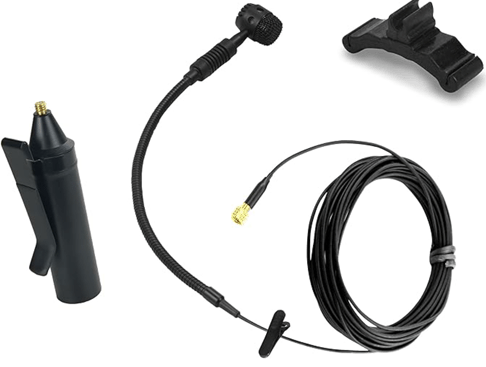Amplified and electric cello
Amplified cello
A cello is not just the sound of its strings, it is a complex interaction of many materials and a design that has evolved over 400 years such that the resonating box can produce an incredible variety of tone, articulation, and dynamics. The response of the string to the bow is directly related to this design, the sense of drawing sounds out of the instrument, and the supple yet palpable feeling of resistance to the bow it exhibits is an integral part of playing the instrument. All of these things occur within the acoustic environment, and no electric cello will ever be capable of this, as there is no mechanism for this visceral response absent the mechanical dynamics of the cello. In addition, because of the absence of these complex interactions, an electric instrument responds in a very different way to the bow, and it is almost nothing like bowing a real cello. Because an electric cello does not respond in any way like an acoustic cello, if your ambition is to play classical cello, do not even think about an electric cello. If you can already play the cello, you can learn to play an electric with some modification to your technique, but to go from learning on an electric to playing a traditional cello is a different matter entirely. Bowing technique is utterly different. No electric cello, no matter how expensive, will ever sound like a real cello, though there are now modeling devices that are quite remarkable. The only reason to get and initially learn to play on an electric is if that is your end goal, to play electric cello. This is not meant as a discouragement to play electric cello at all, but an explanation of the issues that must be considered.
There are two ways to amplify a traditional cello, with a microphone or with a pickup. While there are many microphones that are available, there are few that work when playing in very loud or very compact conditions (such as a club). There are very expensive ones like this for @$1700 plus the costs of a mount to put it onto the cello, in addition to a cable
http://recordinghacks.com/microphones/Schoeps/CMC-6
or DPA d:dicate for @$650 + custom cable
https://www.dpamicrophones.com/dvote/4099-instrument-microphone
Microphones are more prone to feedback and picking up other sounds, so they are often not the best choice, and certainly not on a budget. They can also present some problems if playing with various effects is desired.
The other option is a pickup, which usually consists of a piezo element that must be in direct contact with the instrument in some way to pick up the sound of the cello. The better ones include the Realist
and the Schertler Stat Series
https://www.schertler.com/en-US/shop/pickups/stat-c
While these are much more affordable, they require some kind of preamplifier that in most cases must have an input of 10 megaohms in order to sound well. Even still, these do not produce a natural cello tone, because they get the sound through contact with the instrument rather than through the air (put your ear against the body of a cello sometime while it is being played to get the idea). These devices when combined with a good preamp (and there are ones that can be DIY like this one)
http://www.scotthelmke.com/Mint-box-buffer.html
hat will allow you to use pretty much any kind of effects or pedals that are out there.
There is an intriguing new specialized preamp that can create an almost natural cello sound with a contact pickup. Check out this demo:
ToneDexter preamp
Here is a demo of several preamps
Below is the signal chain of a cellist who successfully recorded a metal band-type cello performance that was very effective. It does not sound like a cello, though, it is highly processed.
“What I used for this recording was a Shadow 955 NFX (at least it looks exactly the same, but the model number may be different since I might have an older version of that pickup).
The recording software I used was the one that you get for free when buying a JamVox. I used the JamVox to plug in my cello. In the JamVox there’s a lot of different amps and effects and I the one called “Metal Lead”.
The only pedal I used was a wah-wah pedal called weeping demon.
If you’re interested in using an octave pedal I strongly recommend the Boss OC-3 it has worked really well for me on live-stages, it has a GREAT pure sound.”
Electric cellos
There are many electric cellos on the market online at eBay or Amazon, most of which are cheap factory instruments that have terrible necks, bridges, pegs, tuners/tailpieces, strings, and electronics. In many ways they are comparable to the low quality cellos that too often are seen from such marketplaces. The necks twist and warp, making intonation difficult even if you get everything else set up well. To fix this, you are going to have to spend a good deal more money, usually as much as the instrument cost, and then the electronics are often very poor. Even if the electronics are decent, you still have the same problem as the cello contact pickups above. There are always going to be low-grade sellers out there for any product, and my cautionary comment here is very particular.
Many people feel that the best electric instruments out there are designed by Ned Steinberg (NS), and there are people who like those from Yamaha, as well. Again, these may well require a good preamp in order to sound good.
https://thinkns.com/instrument/ns-design-electric-cello/#comparison
Yamaha electric cellos
https://usa.yamaha.com/search/index.html?search=silent+cello
Other designs you might want to look into for fun include the bakelite instruments from the 30s. You can get the designs for their pickups online (patent filings). These were the original Rickenbacker pickups, BTW, Rickenbacker bought the firm making bakelite instruments mainly to secure this design. They made a few experimental cellos, but I have never seen one. (Rickenbacker later made many of the guitars used by the Beatles and many others). Rickenbacker killed the project when they ran into reliability problems with the bakelite necks IIRC, but they kept the pickup patents. Here is an ensemble of original Bakelite instruments:
Impedance considerations
It is a good idea to enquire as to the input impedance of any electric instrument or pickup that you are interested in, as many of these cellos have a very high output impedance, as mention before, and they need to see an input that accepts this impedance. Most amplifiers do not. If your amp has an input with impedance of 10 megaohms, it would work, but very few do. Ideally, you also need a very short shielded cable to connect to a preamp/DI with an input impedance of 10 megohms, then connect from that to an amp input with a good quality cable. A piezo pickup (that is what is on the cello) is subject to RFI and EFI (radio-band- or electrical-frequency- interference), which is why you need a short, shielded cable to limit this (they may also have a ground problem). The impedance mismatch acts as a high pass filter that filters out most of the fundamental pitch of the cello, so the sound is thin and scratchy. You might go to a good guitar-type shop that has lots of DI (direct in) boxes to try. Some electric guitars (and basses) have ultra high impedance pickups, so they may well have something that you can try to see if it works. This is true of amps, as well. Beware of guitar amps, because they will not necessarily have a natural sound on the cello. Best are keyboard amps and some bass amps.



